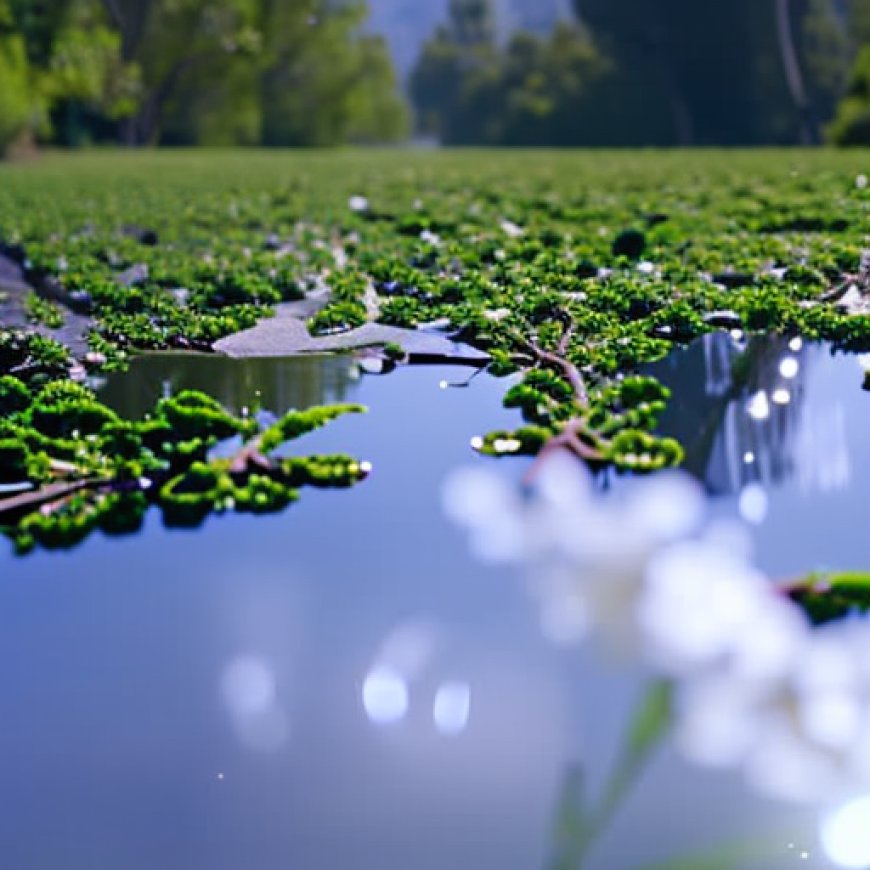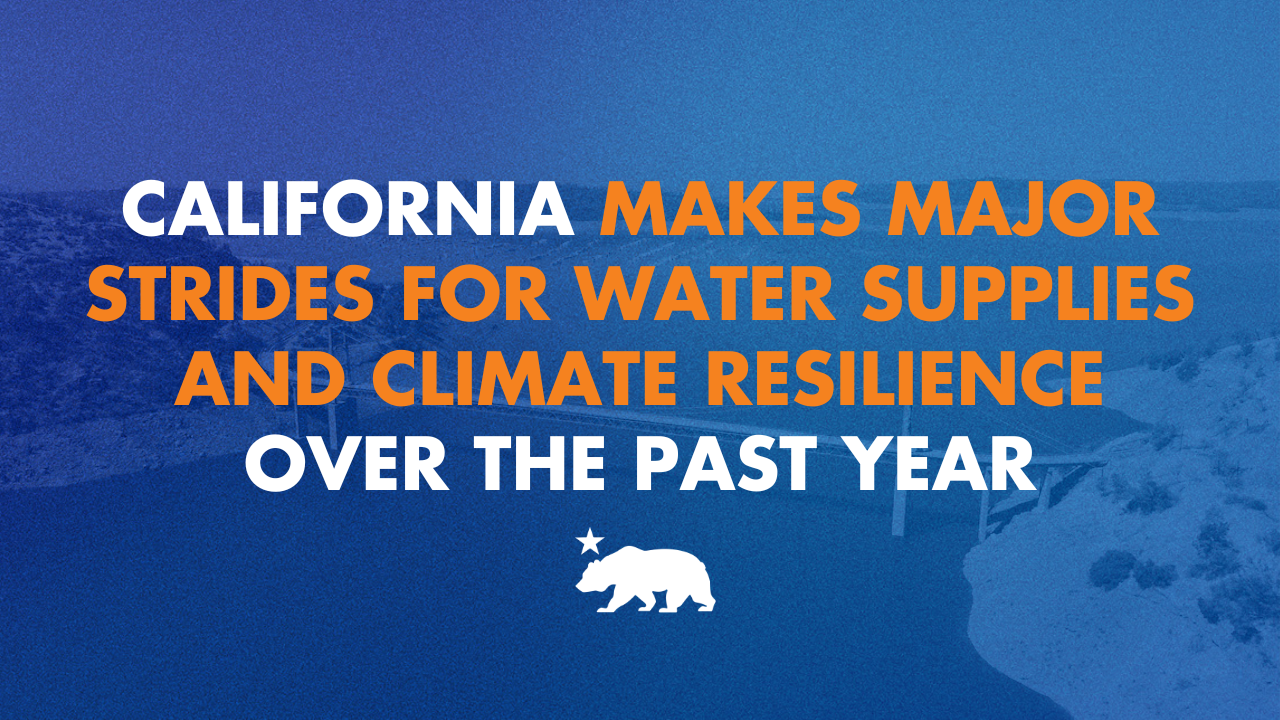California makes major strides for water supplies and climate resilience over the past year | Governor of California



What you need to know:
With California experiencing climate-driven extremes in weather, the state is continuing to take aggressive action to protect and expand the state’s water supplies, including prioritizing groundwater recharge and infrastructure improvements and supporting vulnerable drinking water systems.
SACRAMENTO — The State of California, under the leadership of Governor Gavin Newsom, has made significant strides in securing and enhancing water supplies while building climate resilience. Over the past year, California has implemented innovative water management strategies and invested heavily in drinking water systems, groundwater protection and infrastructure projects, benefitting millions of residents statewide.
As the state begins a new water year, here’s an overview of some key developments:
Key milestones
- Connecting hundreds of thousands of people to clean drinking water: Close to 900,000 more Californians now have access to clean drinking water since 2019, thanks to consolidation efforts and infrastructure improvements benefiting underserved areas across the state. Since Governor Newsom took office, California has reduced the number of people who lack access from 1.6 million to approximately 700,000.
- Supporting drinking water systems: Nearly 400 communities across California have received support to bolster their drinking water and wastewater systems and build resilience against climate impacts through $880 million distributed by the State Water Board in the 2023-2024 fiscal year alone. These projects, which focus on both immediate and long-term needs, ensure cleaner and more reliable water access for local communities. Since 2019, California has facilitated more than 140 water system consolidations to provide safe drinking water, and the Governor last month signed SB 1188 (Laird) to support struggling small water systems with technical resources.
- Streamlining Sites Reservoir project: California is forging ahead with this major water storage project which could store enough water for 3 million households’ yearly usage. The Sites Reservoir project cleared a legal hurdle last month under expedited judicial review enabled by the Governor’s infrastructure streamlining law.
- Making progress on the Delta Conveyance Project: California released the final Environmental Impact Report for this critical project, as well as a new cost-benefit analysis showing that it would create billions of dollars in benefits for California communities – including reliable water supplies, climate change adaptation, earthquake preparedness and improved water quality. With every $1 spent, $2.20 in benefits would be generated. Through the rest of the year, local water districts that depend upon the State Water Project will vote on funding the project. To date, the boards of the first three such districts to vote have committed to providing planning funds for the project.
- 10 years of protecting groundwater supplies: California last month marked the first decade of protecting and sustaining our critical groundwater supplies through the Sustainable Groundwater Management Act (SGMA), which empowers local agencies to tackle overpumping that endangers water supplies for communities, agriculture and ecosystems. Since the law’s enactment, more than 300 local Groundwater Sustainability Agencies have been formed and are implementing enforceable groundwater sustainability plans. The state has invested nearly $1 billion in SGMA to achieve groundwater sustainability for future generations.
- Increasing groundwater supplies: California has increased its groundwater reserves, investing in projects that recharge groundwater basins, including capturing excess stormwater. In 2023 alone, 4.1 million acre-feet of water were added to underground aquifers through managed efforts.
- Water Plan for extreme weather: Governor Newsom unveiled an update to the California Water Plan, outlining comprehensive solutions to enhance the state’s ability to capture and store more water, especially during extreme weather events like floods. This plan includes infrastructure improvements and technological advancements to build climate resilience.
- Clearing $880 million in water utility debts: The state distributed $880 million to eliminate water utility debts for 4 million Californians, alleviating financial burdens on residents and businesses and ensuring continued access to water services during challenging economic times.
As California begins a new water year, the state remains ready to respond to changing water conditions, including the potential return of dry conditions. With estimates that hotter, drier conditions could reduce California’s water supply by up to 10% by the year 2040, the state is implementing an all-of-the-above approach to safeguard and boost water supplies as outlined in the California Water Plan, Water Supply Strategy, and Water Resilience Portfolio.
Recent news
SDGs, Targets, and Indicators
| SDGs | Targets | Indicators |
|---|---|---|
| SDG 6: Clean Water and Sanitation | 6.1 By 2030, achieve universal and equitable access to safe and affordable drinking water for all | Indicator not mentioned |
| SDG 6: Clean Water and Sanitation | 6.2 By 2030, achieve access to adequate and equitable sanitation and hygiene for all and end open defecation, paying special attention to the needs of women and girls and those in vulnerable situations | Indicator not mentioned |
| SDG 6: Clean Water and Sanitation | 6.3 By 2030, improve water quality by reducing pollution, eliminating dumping and minimizing release of hazardous chemicals and materials, halving the proportion of untreated wastewater and substantially increasing recycling and safe reuse globally | Indicator not mentioned |
| SDG 6: Clean Water and Sanitation | 6.4 By 2030, substantially increase water-use efficiency across all sectors and ensure sustainable withdrawals and supply of freshwater to address water scarcity and substantially reduce the number of people suffering from water scarcity | Indicator not mentioned |
| SDG 6: Clean Water and Sanitation | 6.5 By 2030, implement integrated water resources management at all levels, including through transboundary cooperation as appropriate | Indicator not mentioned |
| SDG 6: Clean Water and Sanitation | 6.6 By 2020, protect and restore water-related ecosystems, including mountains, forests, wetlands, rivers, aquifers and lakes | Indicator not mentioned |
| SDG 6: Clean Water and Sanitation | 6.a By 2030, expand international cooperation and capacity-building support to developing countries in water- and sanitation-related activities and programmes, including water harvesting, desalination, water efficiency, wastewater treatment, recycling and reuse technologies | Indicator not mentioned |
| SDG 6: Clean Water and Sanitation | 6.b Support and strengthen the participation of local communities in improving water and sanitation management | Indicator not mentioned |
| SDG 6: Clean Water and Sanitation | 6.c By 2030, expand international cooperation and capacity-building support to developing countries in water- and sanitation-related activities and programmes, including water harvesting, desalination, water efficiency, wastewater treatment, recycling and reuse technologies | Indicator not mentioned |
| SDG 13: Climate Action | 13.1 Strengthen resilience and adaptive capacity to climate-related hazards and natural disasters in all countries | Indicator not mentioned |
| SDG 13: Climate Action | 13.2 Integrate climate change measures into national policies, strategies and planning | Indicator not mentioned |
| SDG 13: Climate Action | 13.3 Improve education, awareness-raising and human and institutional capacity on climate change mitigation, adaptation, impact reduction and early warning | Indicator not mentioned |
| SDG 13: Climate Action | 13.a Implement the commitment undertaken by developed-country parties to the United Nations Framework Convention on Climate Change to a goal of mobilizing jointly $100 billion annually by 2020 from all sources to address the needs of developing countries in the context of meaningful mitigation actions and transparency on implementation and fully operationalize the Green Climate Fund through its capitalization as soon as possible | Indicator not mentioned |
| SDG 13: Climate Action | 13.b Promote mechanisms for raising capacity for effective climate change-related planning and management in least developed countries and small island developing States, including focusing on women, youth and local and marginalized communities | Indicator not mentioned |
Source: gov.ca.gov








